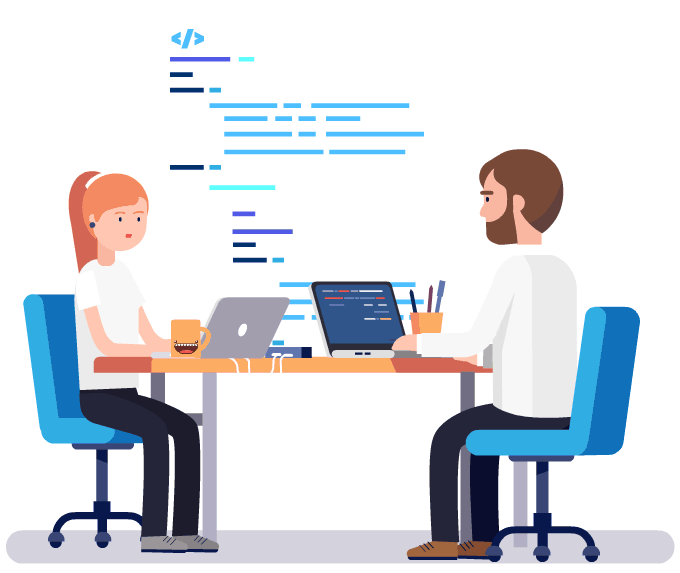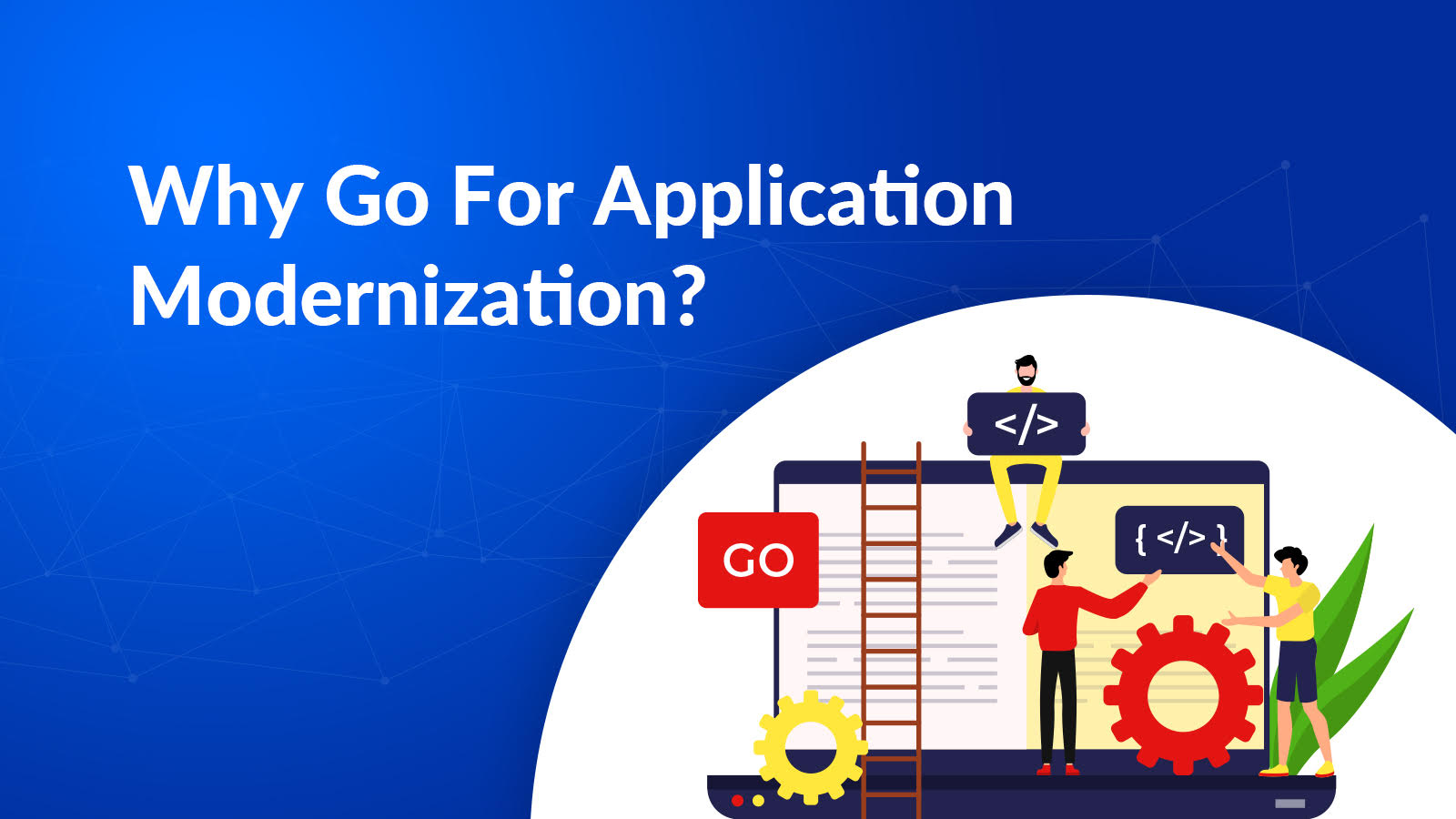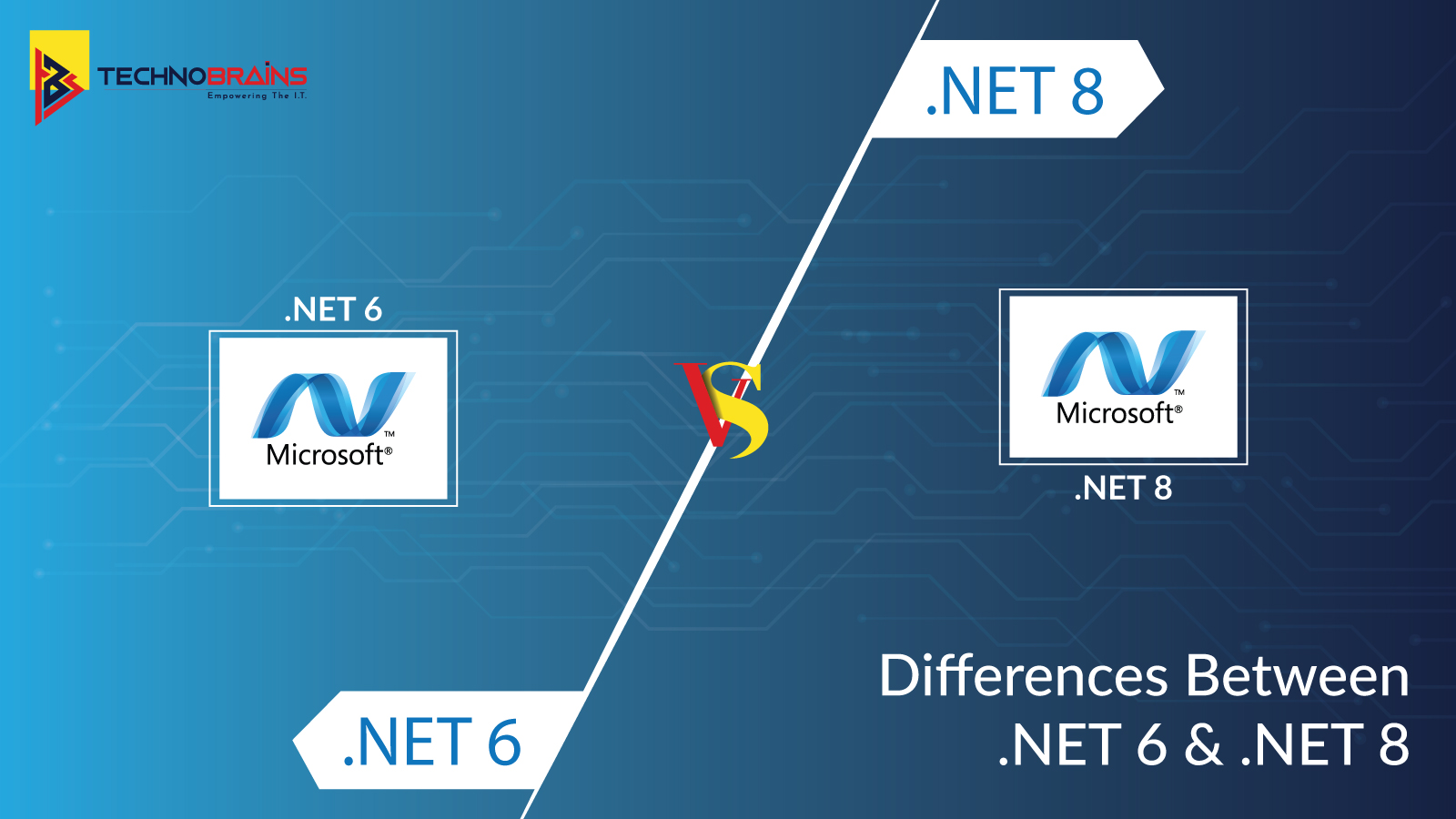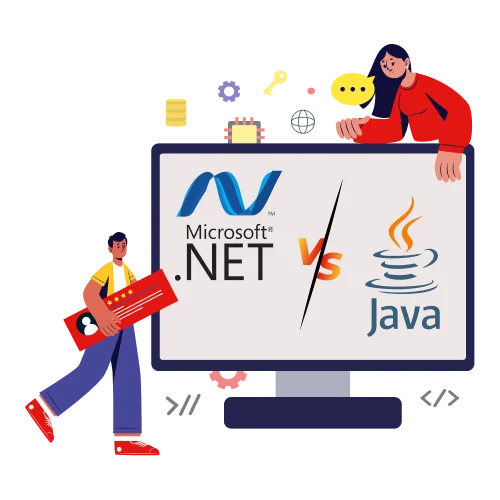Get 40 Hours Free Developer Trial
Test Our Developers for 40 Hours at No Cost - Start Your Free Trial →
The buzzword of the last few years has been digital transformation. However, the pandemic greatly increased its use as businesses realized how important it was to be digitally present while they were physically distancing themselves from customers. Companies have been heading in this direction even more since Microsoft’s announcement that it will be able to see 2 years’ worth of digital transformation in 2 months. Thus, if you are thinking about Application Modernization, then this article is for you.
Nonetheless, legacy applications’ monolithic architecture made achieving digital transformation difficult for organizations. When business applications flourished in Low-Code/No-Code environments, these apps still ran on dying technologies. While newer applications communicate with other applications using microservices and APIs, legacy applications still required full development teams for even the slightest third-party integration. Businesses can’t keep up. Modernizing applications provides the solution.
Organizations’ legacy systems were, modernized using state-of-the-art tools and technologies. In terms of experience and functionality, system participants could fully utilize their systems and processes.
Without application modernization, digital transformation is like trying to relocate to a new country, but not wanting to go there. In order to fully transform your business into the digital world, you must modernize your systems, processes, and products.
Application modernization for a variety of reasons: listed below
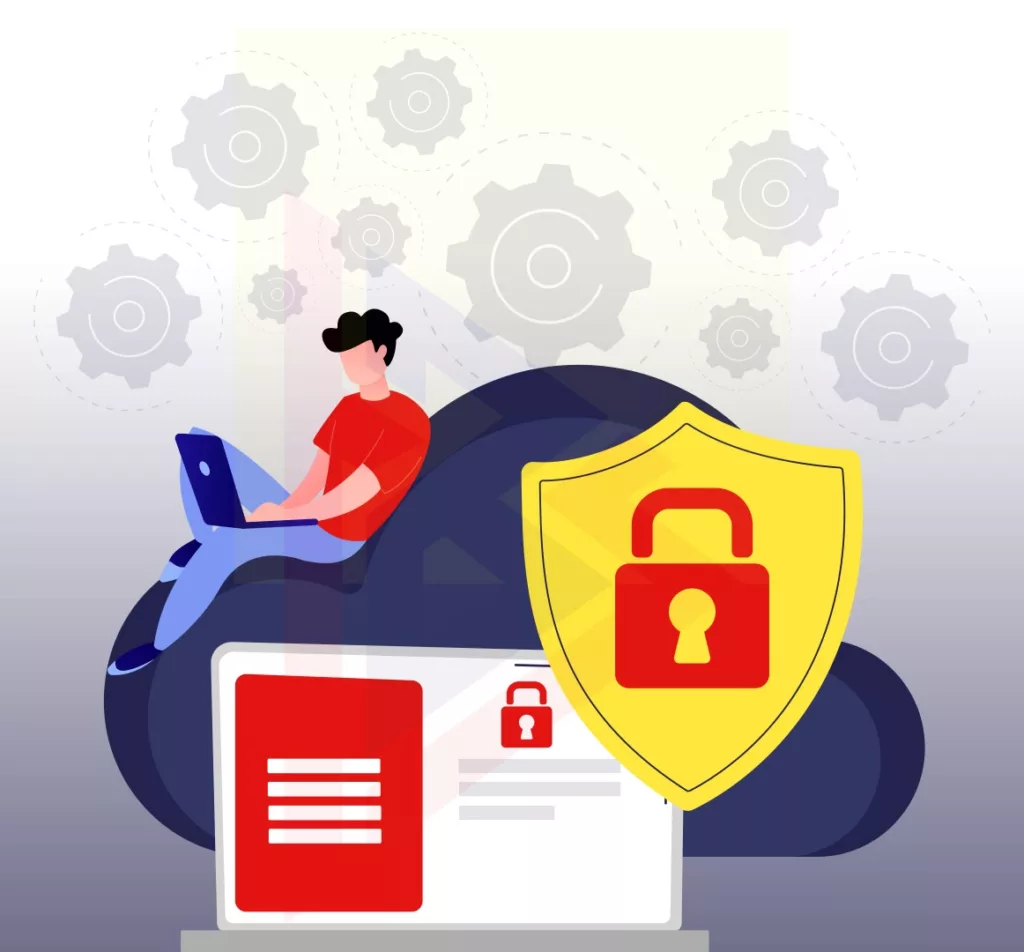
- Enhanced Security: Data can be, at risk of being, compromised if it is, fed into outdated or dying platforms. Older platforms become more susceptible to security patches. A modernized application eliminates this challenge and enhances security by upgrading to the latest platforms or technology versions.
- Scalability With Cloud: Applications are, usually migrated to the cloud as part of application modernization. Taking advantage of cloud computing instead of physical servers allows the application to scale in a more secure and scalable manner.
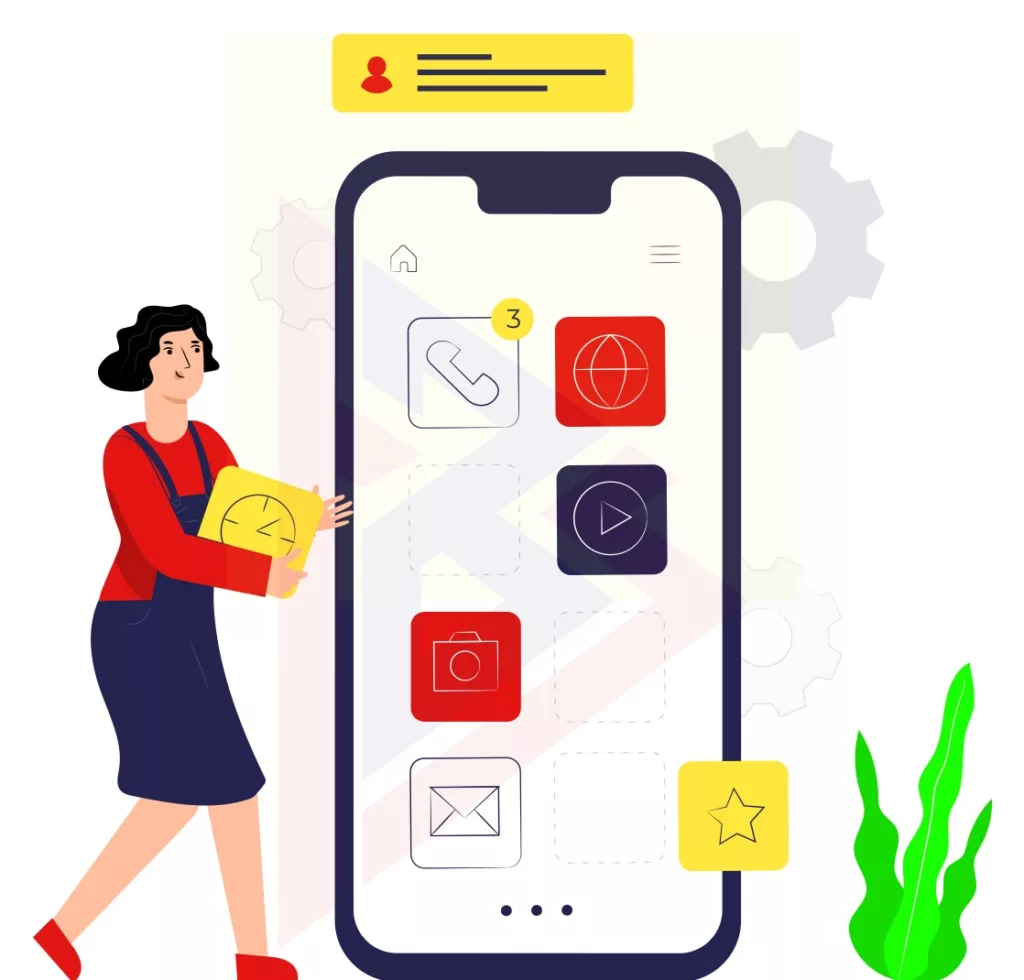
- Improved Functionalities: Furthermore, the majority of companies are now implementing application modernization to add newer features and functionalities to legacy systems. When they want to add new functionality, they do not have to invest in third-party integrations. Modern applications make it easy to do so.
- Greater Opportunity To Automate: As a result of the pandemic-induced lockdowns, many businesses have automated. Businesses that have, already migrated to the cloud can automate their applications that are, modernized.
- Prevent Getting Outdated & Out-competed: Businesses often fail due to outdated systems they offer to their customers and users. This could lead to them being, outcompeted. Modernized applications keep you current and provide state-of-the-art functionality.
- Reduced Manual Dependency: In application modernization, tasks are, automated to reduce redundancy and improve productivity. Consequently, the workforce is less dependent on the company and can be more productive.
Read about the Python Trends here.
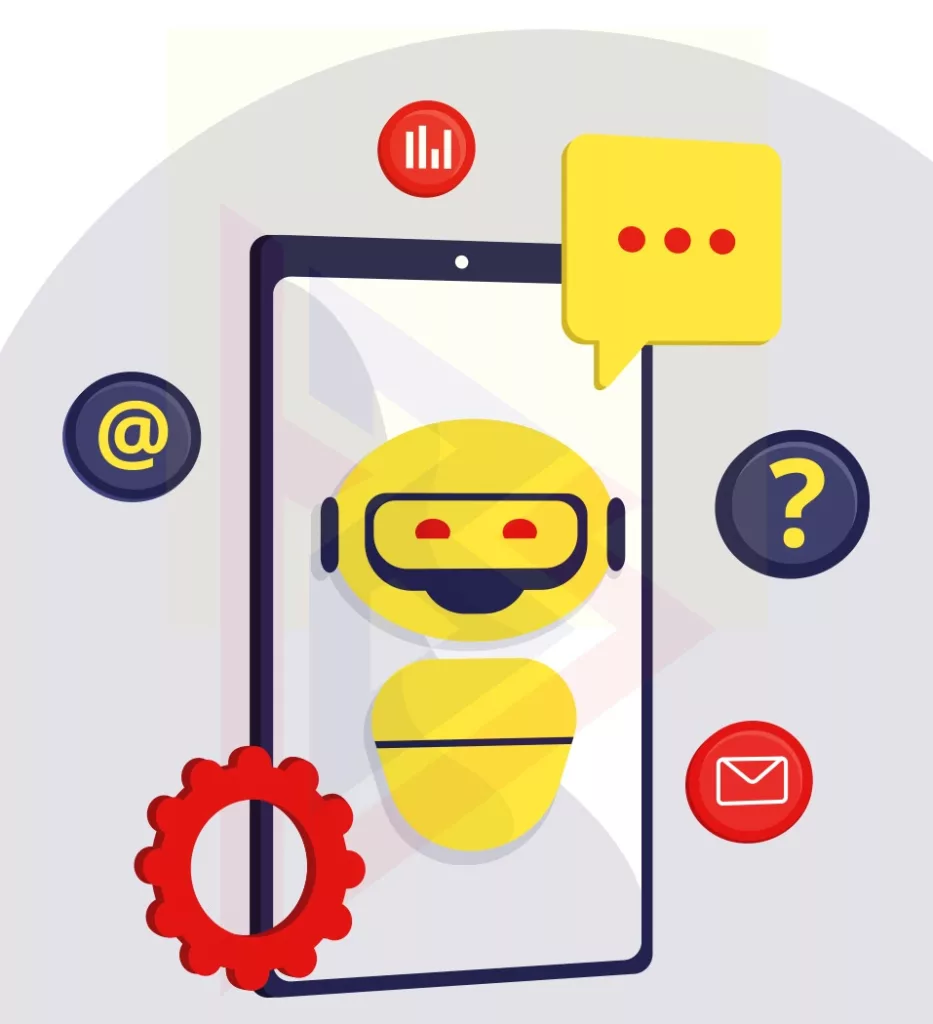
Step-By-Step Process To Modernize Legacy Applications
It is important to follow different steps when it comes to modernizing legacy applications. In order to do this, one must first understand and analyze the current system, the technologies it uses, its dependencies, etc., before identifying the possible ways to modernize it. We have discussed below several steps that must take place from planning to actual modernization of a legacy application.
Step #1: Understand, Identify, & Assess
Start by analyzing the existing state architecture and understanding the current application technology stack.
As you will be identifying dependencies (data, interfaces), complexity, and unused or missing code, this is an extremely important assessment.
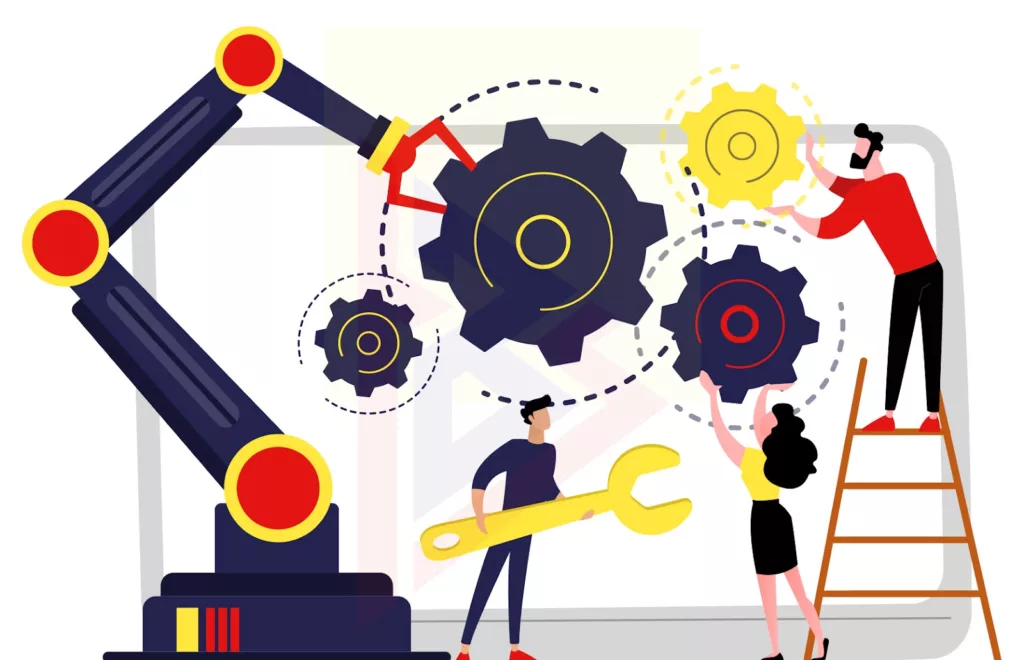
Try to understand your operations and infrastructure’s security and performance needs as well. The goal of this step is to reduce the risks associated with implementing modernization by analyzing the impact on end users.
Step #2: Plan
Developing a modernization strategy includes estimating costs, determining technical approaches, reviewing risk mitigation, identifying integration requirements, determining testing strategies, and determining security.
There will be, a lot of information contained in this roadmap, such as a detailed project plan, details on the costing, and staffing requirements.
Step #3: Implement
Design, build, testing, and deployment will be key aspects of your implementation. The best results can be, achieved with an agile framework and DevOps best practices.
In addition, you should consider data migration very seriously and ensure that you do not only design new structures but also transform and cleanse existing data during migration.
Step #4: Go-Live
A major milestone of your process, regardless of how you go about it, is going live.
Communicate process-related information to the larger network of people who utilize the system rather than just a select few internal users. The ultimate test of application modernization is end-user acceptance.
Step #5: Maintain
Now that you have completed modernization to the latest phase, you have gone live. It is obvious that your next concern is the maintenance of the new application.
Read about the Best ASP.NET Tools To Build Mind-blowing Web Applications, here in our blog.
What kind of skills are you looking for and how long will you need the support after going live?
The maintenance process starts in earnest after you’ve answered these questions.
During the post-modernization phase, all the practices used should be, documented and Knowledge Transfer should be an ongoing process.
You will also save considerable costs by decommissioning the legacy systems since you will now remove old applications and infrastructure.
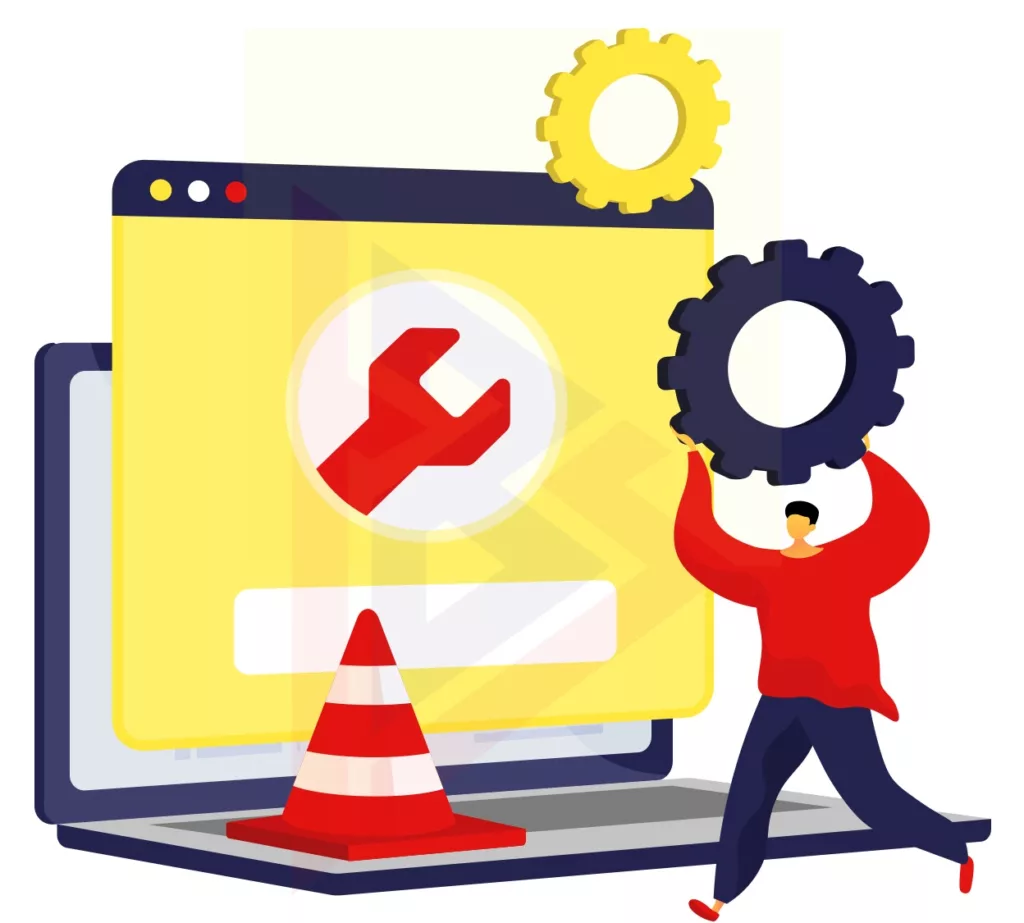
Industries That Demand Application Modernization
Businesses today rely on technological advancements, such as business intelligence, analytics, and machine learning, to handle their operations efficiently and to deliver optimal results consistently.
Not all of them, however, use business applications daily. Various industries such as healthcare, banking, financial services, IT, travel and hospitality, and e-governance need to regularly modernize their applications due to sensitive data and cybersecurity concerns. In order to incorporate these state-of-the-art technologies into existing applications, one can hire AI engineers, add blockchain capabilities, or even hire data scientists.
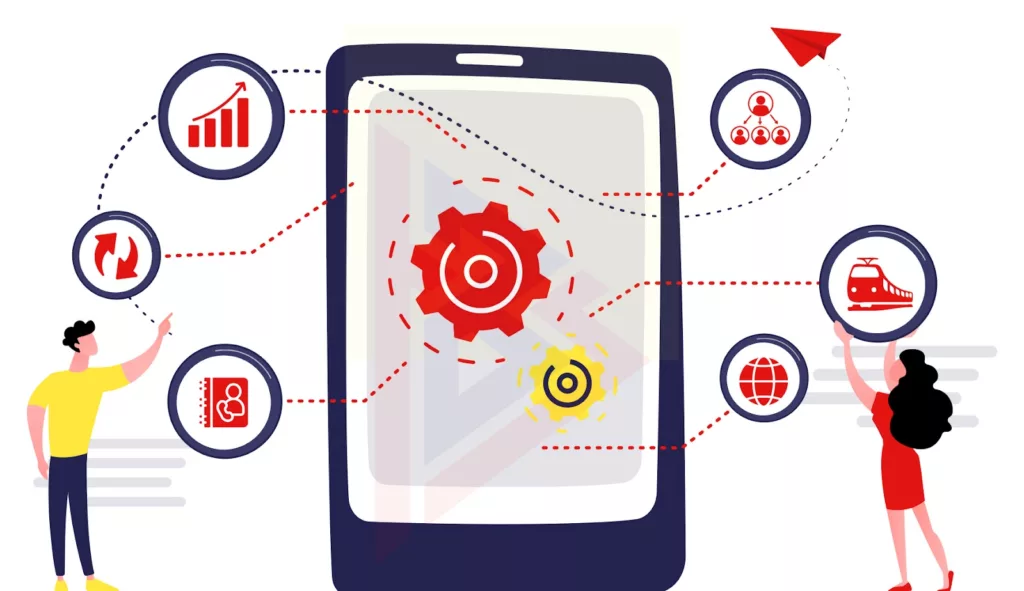
Consideration of application modernization at the right time
You will need software modernization at some point in time, regardless of whether your business is growing constantly or stagnating.
You need to opt for app modernization if any of the following factors apply to you.
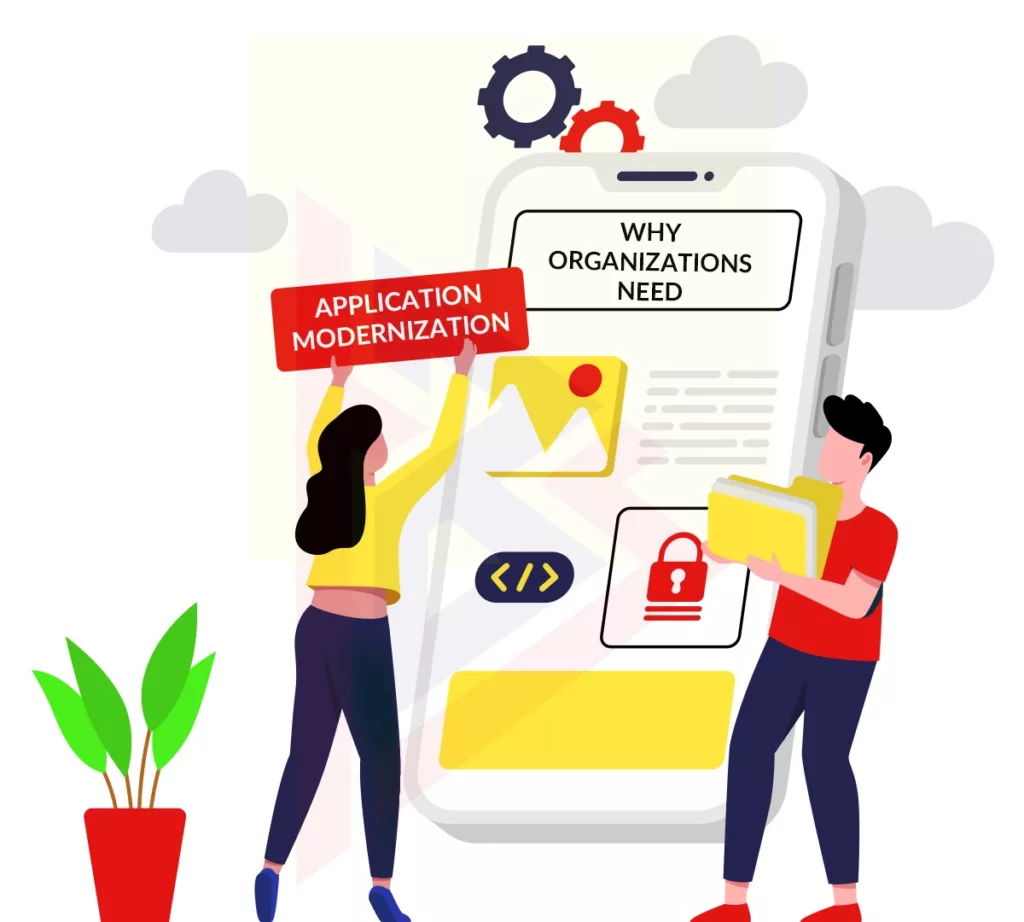
1. You want to reduce operating and maintenance costs
Due to their complexity, legacy products typically cost more to maintain because of the hardware/infrastructure they run on, the need for better architecture, and the lack of reusability.
By leveraging the latest tools and technologies, you can improve efficiencies, reduce operational costs, and increase functionality. If they are planning to rebuild the system, many choose to outsource the entire enterprise application development process to an outsourcing company. The development costs are, further reduced in this way.
2. Integrations Should Be Easier
Modern integrations are probably not possible with your current legacy products. Using web-based APIs, your software can seamlessly integrate with other software providers. The lack of this API makes legacy products less appealing to potential customers.
Using the open ecosystem to re-platform your existing legacy products will help you build new channel partners, accelerate implementations, and reduce the cost of the products for your customers.
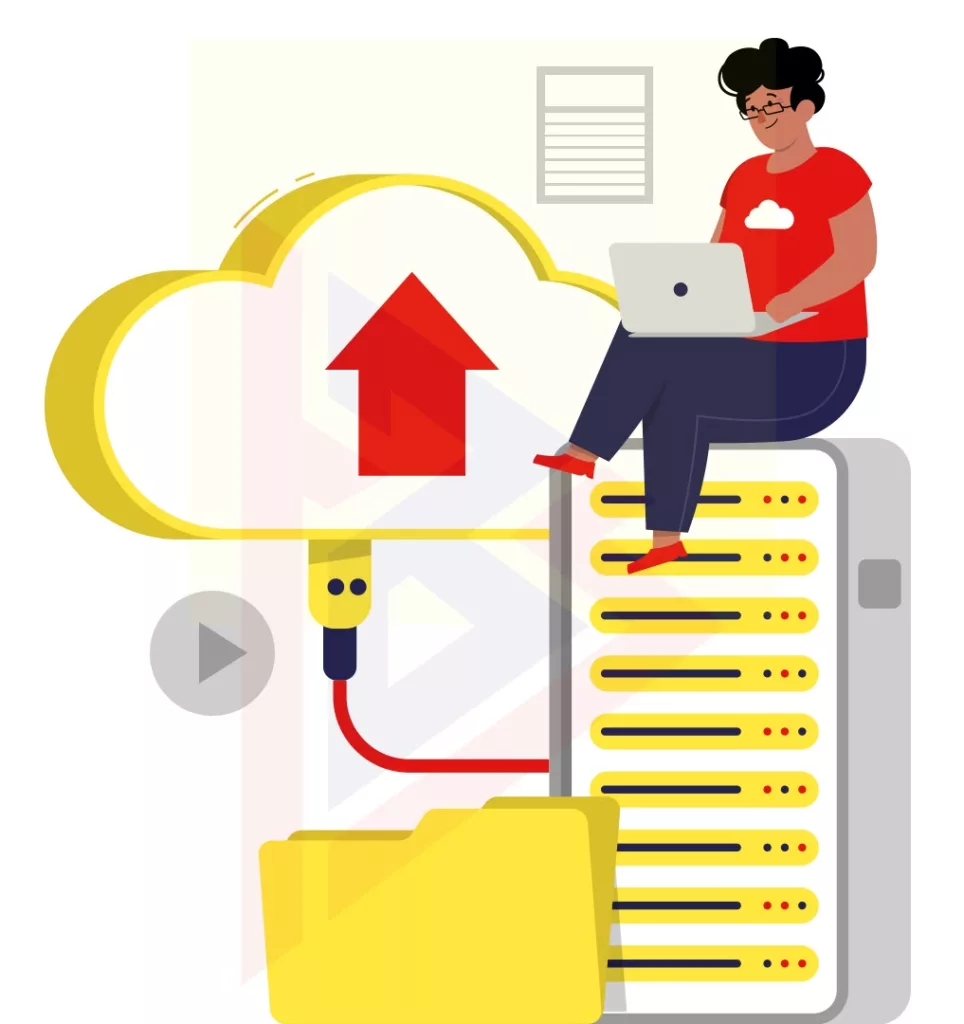
3. You want to take advantage of the cloud
Modernization of enterprise applications is not just about software, but also about hardware. It’s especially important if your customers are tired of maintaining legacy hardware, even if your business app isn’t in the cloud yet!
Moving to the cloud, however, is not a simple ‘lift and shift’ process. In order to fully take advantage of cloud services such as scalability, lower storage costs, and elastic infrastructure, the platform must be redesigned for complex multi-layered architecture.
After realizing that you need to modernize your application, here are some myths related to this process that deter business owners from taking the next step.
Read why Golang is the best language for AI?
Modernize your applications without being deterred by myths

The technology landscape is undergoing rapid changes due to multiple cloud and mobile technologies today. IT leaders and developers are finding it increasingly difficult to maintain the latest and most up-to-date apps.
Many IT-related businesses want to modernize their enterprise applications but are put off by a few fears and myths. Let’s dispel them:
1. All of my IT systems and infrastructure are just as good
For many years or decades, many companies have used the same enterprise system. In the current environment, these systems might work well, however, as technology is advancing rapidly, the organization needs to keep up or risk failure.
The decision to transform your organization is often not determined by the level of success you think it has, but by how successful you wish it was. To overcome this mentality, consider how the organization’s current infrastructure can be improved based on its changing needs.
2. It will cost and take a lot of time to update an application
A person often points to a list of other valuable projects and activities in support of this perception.
You could experience downtime or a screeching halt while you are updating your application architecture, which can be rather costly and time-consuming in the short term. However, it is necessary for your organization’s success in the long run.
Remember that modernization is an investment rather than an expense that will save you time and money down the road. Modernizing processes leads to more efficient and enjoyable work, as it simplifies inefficient processes.
Legacy systems may benefit from the use of agile best practices in this update. It is also possible to overcome resistance by modernizing existing projects.
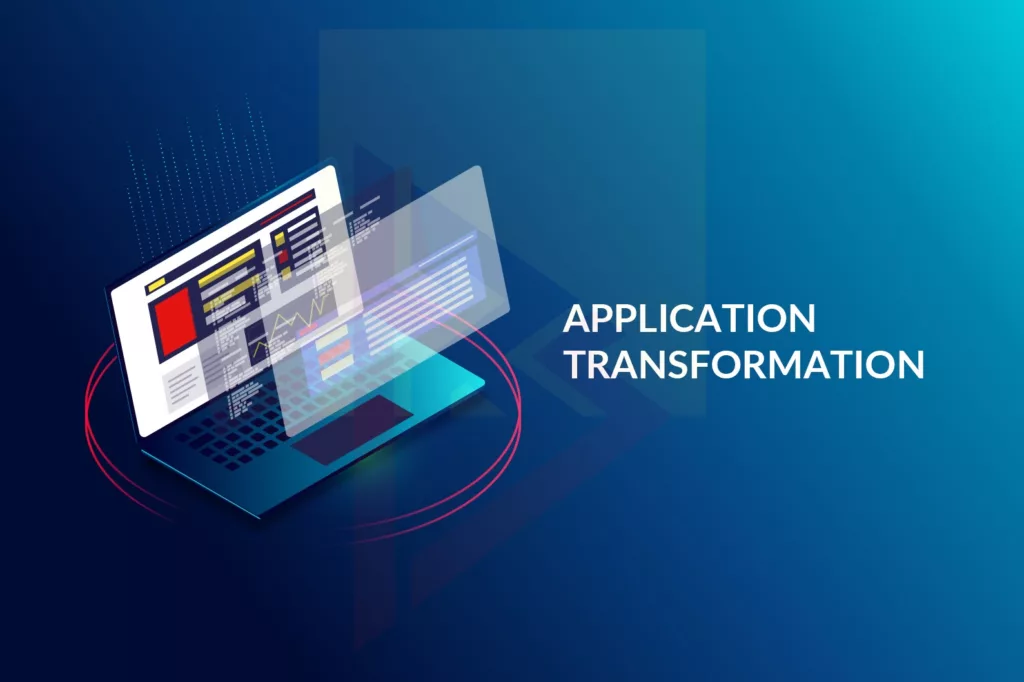
3. Changing the business structure will destroy the existing organization
Business unit leaders and middle management are concerned that modernization will harm their careers. Staff may not know what their roles will be after the update.
Modernization can be regarded as a tool to save old work tasks and abandoned processes if there is fear of losing them. This fear can manifest itself in a wide variety of passive and active behaviors.
It is crucial to consider who negatively views change as modernization is closely linked to organizational change. In dealing with uncertainty, we should be able to recognize people’s fears and treat them with respect.
Managers, leaders, and employees can be encouraged to become part of a “community of change” or functional workgroup where they can regularly collaborate and contribute.
Changing your business practices and holding your staff accountable to company-wide goals and objectives can be an effective way to reshape your business. A potential innovation could be discovered and identified through your current business processes.
Read which one should you select amongst Iconic and React Native for your next project, in our detailed blog.
4. Strict plans limit flexibility in future operations
While modernization is a practice that requires careful planning, budgeting, and implementation, the notion that it restricts workflows and limits flexibility is out of date.
Establishing clear goals, monitoring successes and failures, and making sure the organization continues to grow are all achieved by creating achievable plans.
Engaging stakeholders and employees effectively is an important part of your modernization program. By doing this, you will ensure that each employee, manager, and working leader is personally committed to success.
It is most important that a streamlined plan allows you to adapt to your situation and industry changes no matter how serious since you can evaluate how changes in priorities impact changing policy and needs.
It helps to clarify your objectives, establish the need for change throughout the organization, change the mindset to accept change, and engage leaders, managers, and employees to understand their roles and opportunities in the future of the company. All of these efforts will help reduce friction surrounding the general understanding of modernization.
Conclusion
Today, a business must respond quickly to opportunities and challenges, provide a superior user experience, and streamline processes in order to achieve success.
Products and processes based on legacy systems are often time-consuming, costly, and fail to meet modern business KPIs. Alternatively, application modernization enables legacy applications to be more relevant and contemporary through the use of new IT architectures, while also enhancing agility, efficiency, and customer experience. With modernization, developers won’t need to reinvent the wheel; instead, they’ll just need to update a few things and spend a few hundred dollars.
How can TechnoBrains help you?
“Prepare to fail or fail to prepare?” Keep this in mind.
When IT infrastructure is updated or migrated, this is especially true. Any unplanned migration, whether it involves data migration, Office 365 migration, or application migration, is guaranteed to cause unwanted business interruptions, resulting in lost revenue as well as data loss and reputation damage.
Is enterprise application modernization on your radar?
We are a leading application modernization company and support our customers’ business transformation by facilitating a smooth, quick, and efficient switch to cloud computing. Engineering skills and experience are keys to developing tailored application modernization roadmaps that create and execute futuristic and cohesive strategies.
